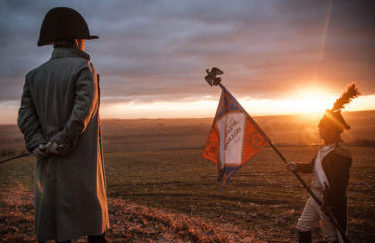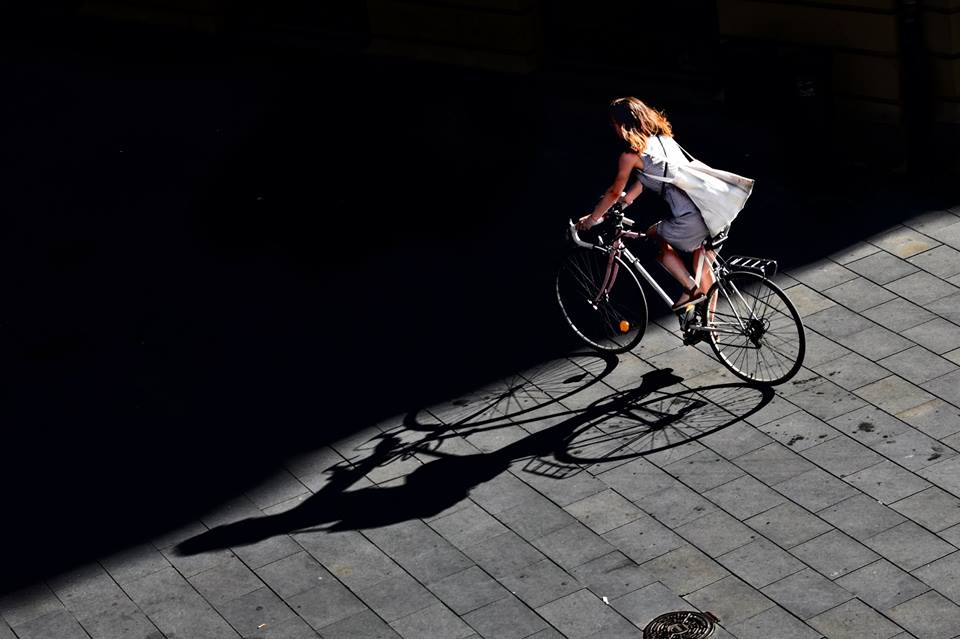Through Brno: The War in “War and Peace”

As a teacher, one of my favourite things to ask students is the following: What are two things that everyone in the world with a high school education knows about the Brno area but does not know that it happened in the Brno area?
It’s a good question. Do you know the answers?
Usually, students blurt out clichés like beer or Kometa. Then they get more serious: Moravian Karst. The trade fair centre. Villa Tugendhat.
No. No. No. Nobody in China knows about a cave system near Blansko. High school students in Peru don’t know about functionalist architecture.
After a while, I provide hints. “Think about the subjects that you study in school…” Tick. Tock. “One of these two answers is so famous that a major square in Brno is named after him…” Tick. Tock.
Usually, the square-in-Brno / pronoun hint leads to Answer No. 1: Gregor Mendel, the founder of genetics, did his research at the monastery on present day Mendel’s Square. (I once had a kid blurt out “Silingrok!” Yeah, right, some dude named something like Honza Silingrok is famous around the world.) Anyone who has taken high school biology has heard about the genetic combinations of dominant and recessive genes. Mendel, using pea plants in the soil of Brno, developed the theory. The Mendel Museum is a fantastic place to learn more.
What is Answer No. 2? Here’s a hint: There is a major landmark in Paris that commemorates the event.

Every December, thousands of people gather in the fields east of Brno to commemorate a battle that arguably changed the history of Europe and the world. The Czechs call it the Battle of Three Caesars or the Battle of Slavkov. Sometimes you hear it referred to as the Battle of Three Emperors.
The French call it the Battle of Austerlitz. They won; winners write the history books; so that is the way most of the world knows it.
Here is a follow-up question: Who were the three emperors?
Napoleon Bonaparte is the easy answer. The other two are less well-known: Tsar Alexander I led the Russian contingent and Holy Roman Emperor Francis II led the Austrian army.
 The Battle of Austerlitz, which took place on December 2, 1805, was part of the War of the Third Coalition and one of the most important in all of the Napoleonic Wars of the early 1800s. Napoleon partially financed it by selling land to the young United States, known as the Louisiana Purchase, two years earlier. Afterward, the Treaty of Pressburg concluded the Third Coalition and basically ended the centuries-old Holy Roman Empire and began the process toward our modern-day international borders.
The Battle of Austerlitz, which took place on December 2, 1805, was part of the War of the Third Coalition and one of the most important in all of the Napoleonic Wars of the early 1800s. Napoleon partially financed it by selling land to the young United States, known as the Louisiana Purchase, two years earlier. Afterward, the Treaty of Pressburg concluded the Third Coalition and basically ended the centuries-old Holy Roman Empire and began the process toward our modern-day international borders.
And, culturally, the battle contributed to the famous Leo Tolstoy book by laying the foundation for the “war” part of “War and Peace”.
The Battle of Austerlitz is widely regarded as Napoleon’s greatest victory. Basically, Napoleon led the Grande Armée of France north from Vienna to pursue the Russian and Austrian armies, often known as the Allies. Before reaching them, he pulled back and feigned weakness. Really, though, he just wanted to force a battle. As part of his ruse, he even broke a cardinal rule of warfare: he purposely weakened his hold of the high ground — the Pratzen Heights, above the present-day village of Prace — in order to lure the Allies into a trap. When the Allies took the bait, Napoleon’s army counterpunched with an aggressive attack, blew through the Allied line, split into two and rolled down each flank to force a chaotic retreat that allowed France to take thousands of prisoners.
In Paris, the Arc de Triomphe at the top of the Avenue des Champs-Élysées has a prominent display to commemorate the victory. The column at the Place Vendôme is dedicated specifically to Austerlitz; it is 44 meters tall and made of the melted canons from the battle.

This year, Battle of Austerlitz events will be held on Dec. 1, 2 and 3. The re-enactment on Saturday, Dec. 2 will include approximately 1,000 participants, 60 horses and 15 cannons in order to commemorate the history that was made on the same mist-covered ground 212 years ago. Tickets are available to sit in the tribune. Otherwise, entrance is free.
Click here for more information about the overall program. Click here for more information.

